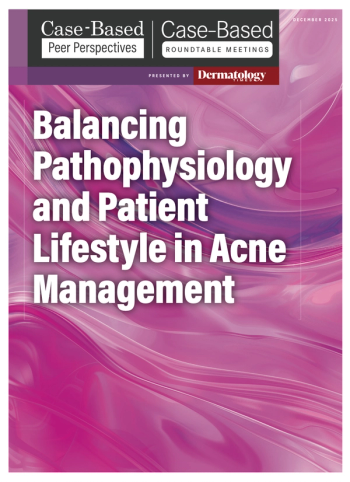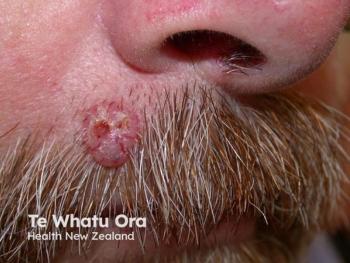
Genetics Suggest New Vitiligo Treatment Path
Key Takeaways
- PCSK9 inhibitors may reduce vitiligo risk by 20-30%, independent of cholesterol levels, through a novel immune-metabolic pathway.
- Genetic variants mimicking PCSK9 inhibition showed consistent protective effects against vitiligo, unlike HMGCR and NPC1L1 targets.
Genetic proxies for PCSK9 inhibition were consistently associated with reduced vitiligo risk across 2 biobanks.
A new study by Kang et al. has uncovered a surprising potential benefit of PCSK9 inhibitors—drugs typically prescribed to lower cholesterol. Through Mendelian randomization (MR), researchers found that people with genetic variants mimicking the effects of PCSK9-inhibiting drugs had a lower risk of developing vitiligo. This unexpected link offers fresh insight into vitiligo's underlying biology and opens new doors for treatment.1
Background
Vitiligo affects millions worldwide and is notoriously difficult to treat. Current options—ranging from corticosteroids and light therapy to JAK inhibitors—are often only partially effective.2 The search for better therapies has led researchers to consider whether drugs used for other diseases might offer benefit. Among these, lipid-lowering agents like statins have been of interest due to observed overlaps between vitiligo and metabolic syndromes, such as dyslipidemia.3 But results from clinical trials using statins in vitiligo patients have been inconsistent and, until now, largely inconclusive.
Methods and Materials
This new study took a different approach. Rather than looking at drug effects in patients directly, researchers used large-scale genetic data to simulate the long-term impact of blocking specific lipid-related targets. They focused on 3 major drug targets: HMGCR (the target of statins), NPC1L1 (the target of ezetimibe), and PCSK9 (the target of newer injectable drugs like alirocumab and evolocumab). Using data from the UK Biobank, the deCODE study in Iceland, and the Global Lipids Genetics Consortium, they tested whether genetic variants that reduce activity of these targets also reduce the risk of vitiligo.
Researchers found only PCSK9 inhibition showed a consistent and statistically significant protective effect. In both UK and Icelandic populations, individuals with gene variants mimicking PCSK9 inhibition had a 20 to 30% lower risk of developing vitiligo. In contrast, genetic proxies for HMGCR and NPC1L1 inhibition showed no benefit—and in the case of HMGCR, may even slightly increase risk.
But why would a cholesterol-lowering protein have anything to do with an autoimmune skin disease? To answer that, researchers dug deeper. They tested whether the benefit of PCSK9 inhibition was due to changes in cholesterol or other lipid markers like LDL-C or triglycerides. Surprisingly, none of these played a role. This suggests that PCSK9's effect on vitiligo operates through a completely different biological pathway.
Results
To identify what might be mediating this effect, the team used a 2-step MR method to analyze over 4,700 proteins in the blood. They found several promising candidates. Notably, proteins like CXCL12, CCN5, FCRL1, and legumain (LGMN) were all upregulated by PCSK9 activity and associated with increased risk of vitiligo. On the flip side, fibroblast growth factor 2 (FGF2), known for supporting melanocyte survival, was suppressed by PCSK9 and linked to reduced vitiligo risk when levels were higher. These proteins could be key players in a previously unrecognized immune-metabolic pathway involved in vitiligo development.
Despite these exciting findings, the authors caution that Mendelian randomization studies, while powerful, have limitations. Genetic variants reflect lifelong exposures, which might not perfectly mimic the effects of short-term drug therapy. Moreover, the exact mechanisms connecting PCSK9 to these mediating proteins—and how they influence melanocyte destruction—are still unclear.
Conclusion
Nonetheless, this study brings a fresh perspective to vitiligo research. It not only highlights PCSK9 as a promising therapeutic target, but also emphasizes the role of immune system regulation beyond traditional lipid pathways. If future clinical studies confirm these findings, PCSK9 inhibitors could one day serve a dual purpose: protecting the heart and preserving the skin’s natural pigment.
In a field where treatment advances are sorely needed, this genetic clue might just be the breakthrough researchers—and patients—have been waiting for.
References
- Kang TJ, Lee SY, Yoon S, et al. PCSK9 inhibitors and the risk of vitiligo: A mendelian randomization study. J Invest Dermatol. 2025;145(4):812-820.e5. doi:10.1016/j.jid.2024.07.021
- Migayron L, Boniface K, Seneschal J. Vitiligo, from physiopathology to emerging treatments: A review. Dermatol Ther (Heidelb). 2020;10(6):1185-1198. doi:10.1007/s13555-020-00447-y
- Shaker ESE, Allam SH, Mabrouk MM, Elgharbawy NM, Salaam SFA. Simvastatin and non-segmental vitiligo: A new potential treatment option?.Dermatol Ther. 2022;35(12):e15969. doi:10.1111/dth.15969
Newsletter
Like what you’re reading? Subscribe to Dermatology Times for weekly updates on therapies, innovations, and real-world practice tips.


















